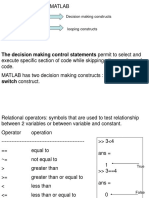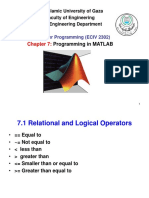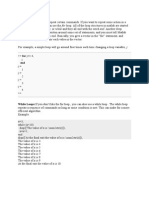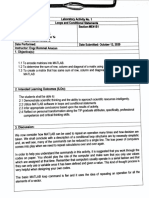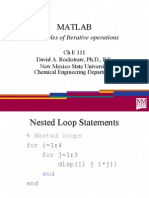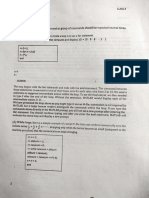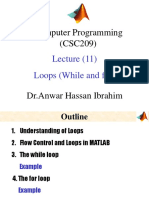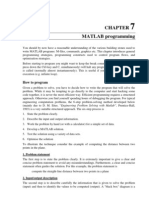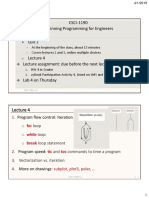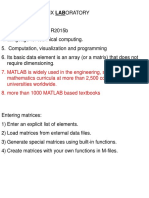100% found this document useful (1 vote)
148 views34 pagesMatlab PDF
The document discusses various control statements in MATLAB including decision making constructs like if/else and switch statements as well as looping constructs like for and while loops. It provides examples of how to use these control statements to make decisions and repeat code blocks. It also covers logical operators, break/continue statements, try/catch error handling, and recursion.
Uploaded by
Abhilash MallikarjunaCopyright
© © All Rights Reserved
We take content rights seriously. If you suspect this is your content, claim it here.
Available Formats
Download as PDF, TXT or read online on Scribd
100% found this document useful (1 vote)
148 views34 pagesMatlab PDF
The document discusses various control statements in MATLAB including decision making constructs like if/else and switch statements as well as looping constructs like for and while loops. It provides examples of how to use these control statements to make decisions and repeat code blocks. It also covers logical operators, break/continue statements, try/catch error handling, and recursion.
Uploaded by
Abhilash MallikarjunaCopyright
© © All Rights Reserved
We take content rights seriously. If you suspect this is your content, claim it here.
Available Formats
Download as PDF, TXT or read online on Scribd
/ 34
